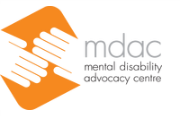Indicator 1(B): What housing options are available for people with mental disabilities?
Conclusion:
Institutions remain the predominant housing option provided by the government to people with mental disabilities. Very few local or regional authorities provide any form of assisted or adapted housing.
Explanation:
For many people with mental disabilities, institutionalisation continues to remain the only form of housing available. Many families and carers of people with disabilities are left to cope on their own. According to the most recent government data available (2011), 73% of people with mental disabilities lived at home. The remaining 27% lived in institutions, and of these, 59% were people with intellectual disabilities.[16]
In January 2013, the government introduced ‘living centres’ and ‘group homes’ as forms of ‘protected housing’ (see Glossary) for people with mental disabilities.[17] These alternative forms of accommodation have only been made available to a small number of people, and reflect an institutional model of congregate housing.
The link between guardianship and institutionalisation is strong: the vast majority people with intellectual disabilities in institutions are under guardianship.[18] This suggests that, in many cases, guardianship is sought to make it easier to place people with disabilities in institutions. For people with intellectual disabilities living with their families, 58% are under guardianship.[19]
[16] Hungarian Central Statistical Office, Evaluation of the 2011 Census – People with disabilities.
[17] Section 75(2) of the Act III of 1993 on Social Management and Social Benefits.
[18] Tamás Verdes, Marcell Tóth, A per tárgya, Gondnokság alá helyezett személyek társadalmi kirekesztődésének mozgásformái a rendszerváltás utáni Magyarországon, (Budapest: ELTE Eötvös Kiadó, 2010), 81.
[19] Ibid.

